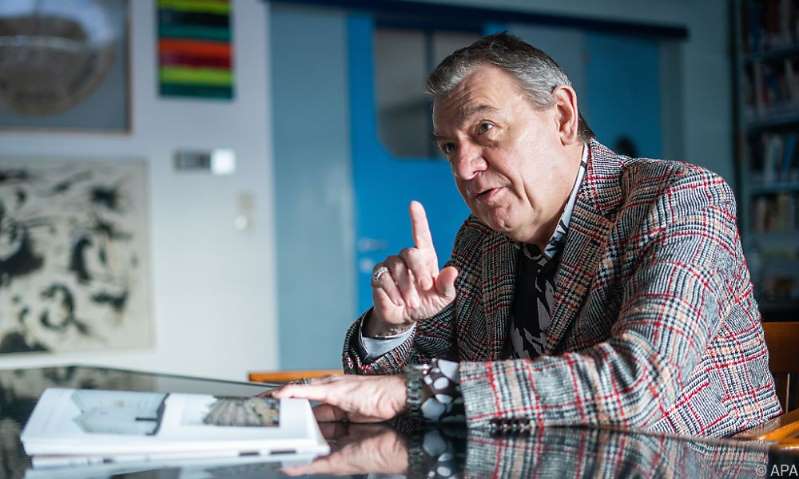When the President of the Secession, Herwig Kempinger, stands only a few decimeters below street level in the unadorned archive of his institution, he looks a bit like a treasure hunter before the groundbreaking ceremony. Surrounded by 123 years of analog (art) history, during his visit to the APA he speaks of an “uncovered treasure” that will be recovered in the coming years in the course of digitization and then made accessible to the public. In doing so, new techniques are used.

Image: APA
“A few years ago I thought it would be interesting if we knew for ourselves what we had in these boxes and could make it available to the public. Century “, says the artist, who has been President of the Secession since 2013. The processing and digitization project was started last summer, and the first installment by the end of the Second World War is expected to be published in around three years.
To do this, a few hundred meters away, in a work room in Lehargasse, there are two specially employed employees who, under the direction of Tina Lipsky, will digitize and catalog all documents, works of art and other found objects in the coming years. And because Kempinger envisions a comprehensive, precise search function, the company commissioned its own database that enables detailed keywording. It is now also possible to no longer rely on scans (the historical templates are often severely affected by the light intensity), but to photograph the artifacts in high resolution, which means that the spine of the book is no longer affected. The company will cost 360,000 euros, one third of which will be borne by the Secession itself, the federal government and the City of Vienna.
To give a little insight into his treasure, Kempinger opens a drawer here, opens a folder there or pulls out a hanging shelf. There is, for example, a report from the “Wiener Rundschau” on the occasion of the opening in 1898: “Blinding white, shimmering gold”, describes the new building that rises up “between masses of rubble, dirt and clay”, quoted Kempigner from the article that was repealed at that time. There was no budget for purchases, but his predecessors “collected money well”.
Among the numerous works there is one by Bruno Gironcoli, which, however, will no longer be shown in exhibitions, since the Secession has dedicated itself to the presentation of living contemporary artists. Or numerous photos from earlier days that eke out their existence in a thick folder. Among them: recordings of legendary carnival festivals that took place in the richly decorated Secession in the middle of the 20th century.
It is a stroke of luck for Kempinger that the archive, which was stored for decades in the warehouse in Lehargasse and during the Second World War (“when the Nazis turned the Secession into a tire store”) in the competitive institution Künstlerhaus, survived the two world wars. After digitization, he hopes to be able to offer a rich fund for various fields of science – from art history to history and sociology. While the database will be accessible free of charge, printable data can be downloaded for a fee.
A look at handwritten correspondence in Kurrent script, which cannot be deciphered by everyone, shows how fragmented the work of the two employees is. “Fortunately, we managed to find someone here,” says the President happily, referring to numerous autographs that have been preserved from correspondence with international greats such as Monet, Rodin and Munch. The exchange was lively “because all the artists found the Secession as a wonderful idea and location and wanted to come to Vienna”. Rodin's archive, for example, contains the insurance list for his works, which he exhibited here, and Max Kurzweil's handwritten proofs have been corrected, among other things.
The most important pieces are to be digitized in the coming months and years in order to ultimately enable comprehensive, accurate research. And then? Then it goes on: With the digitization of the second half of the 20th century and the beginning of the 21st century. You should then have fewer problems with deciphering and transcribing: “We also kept every email …”

